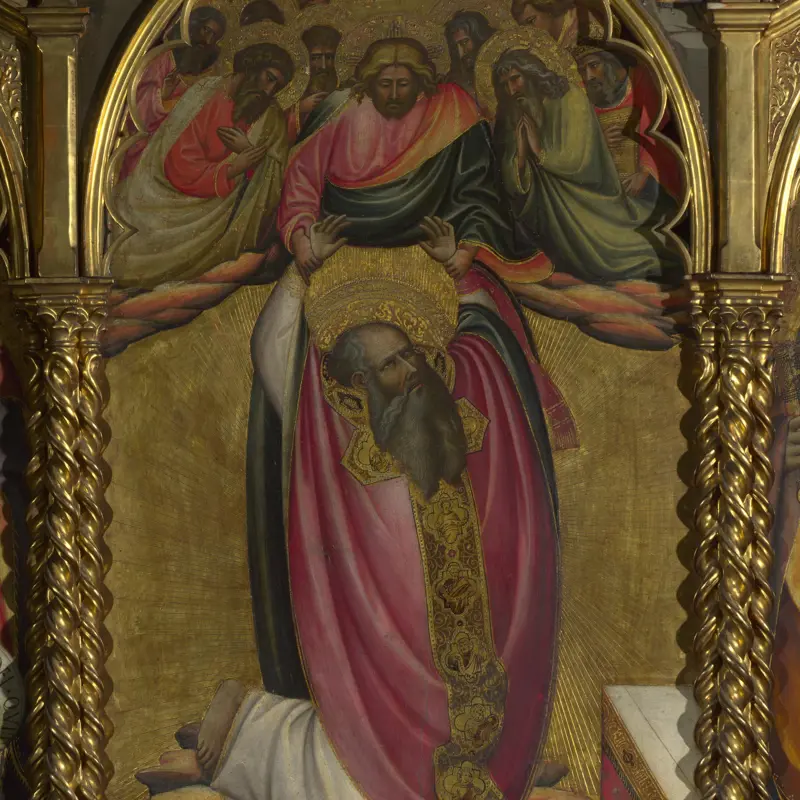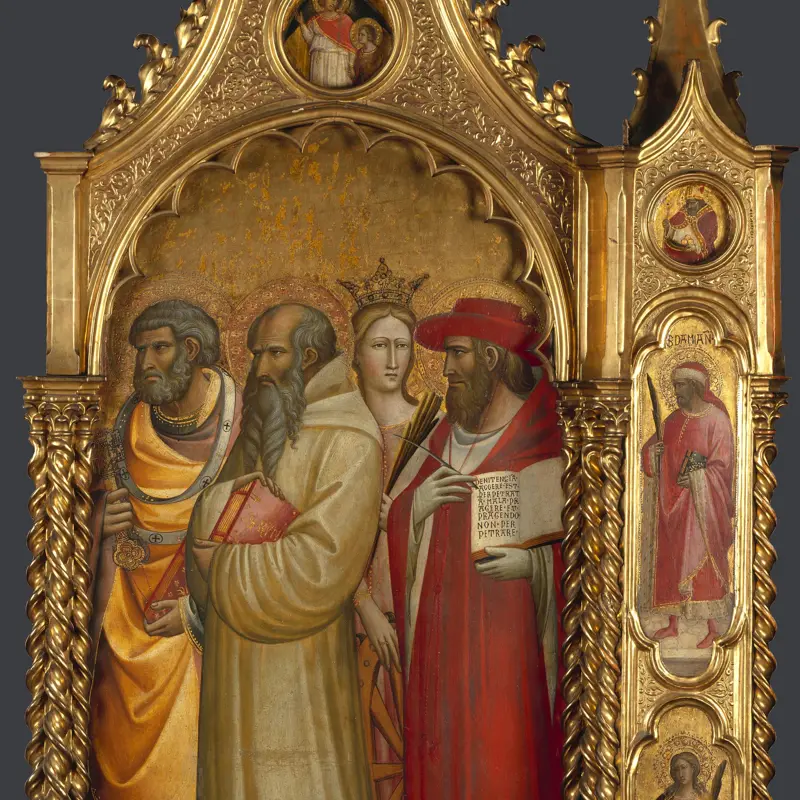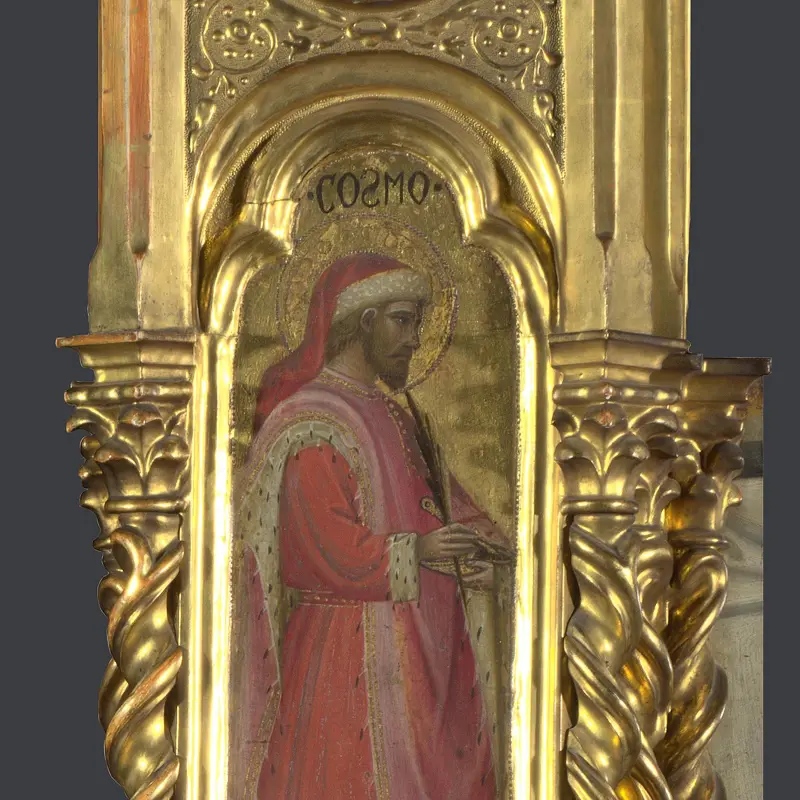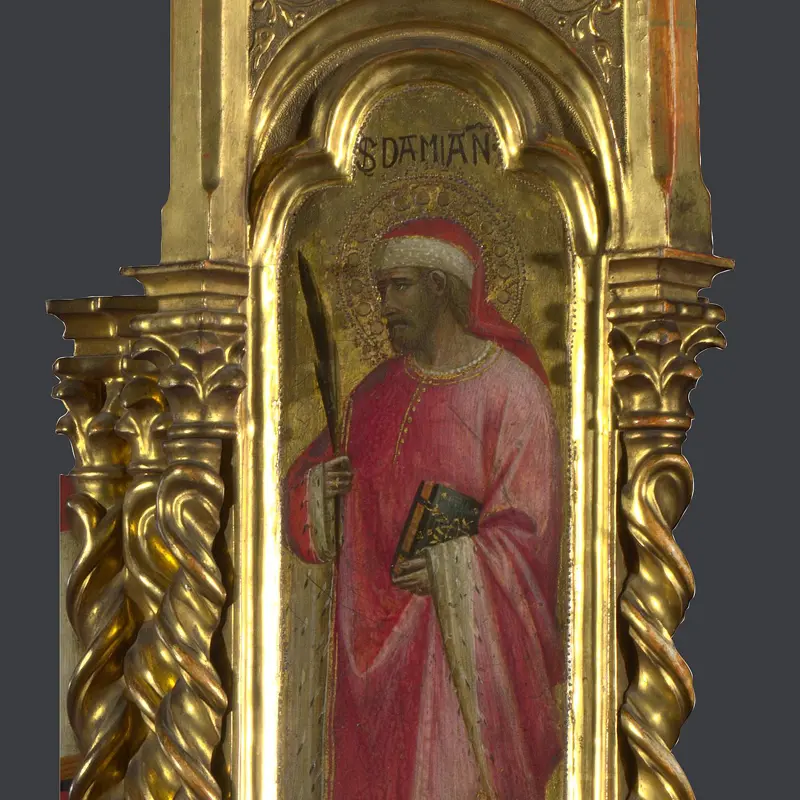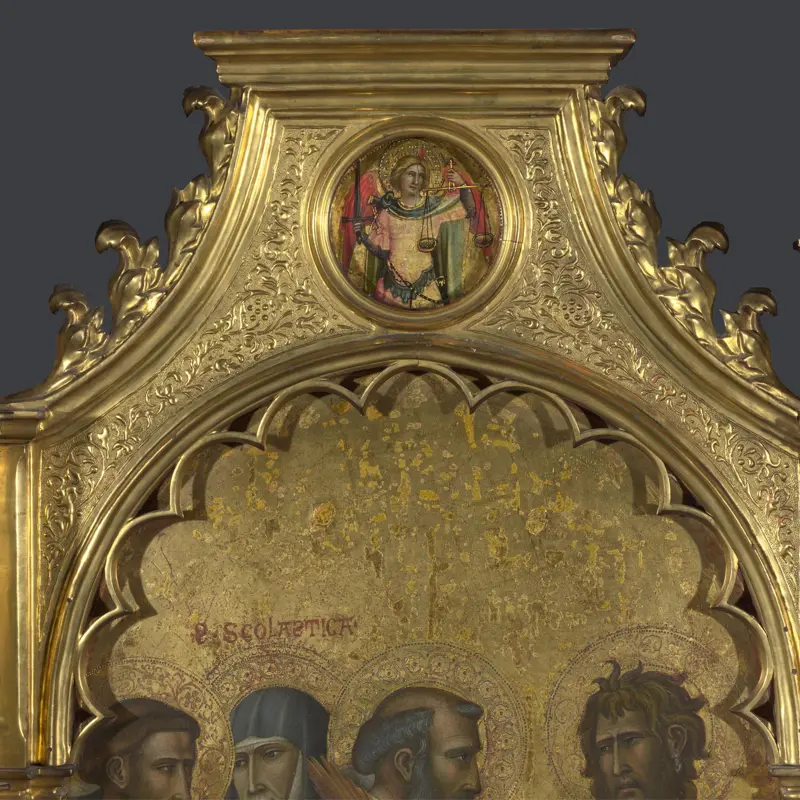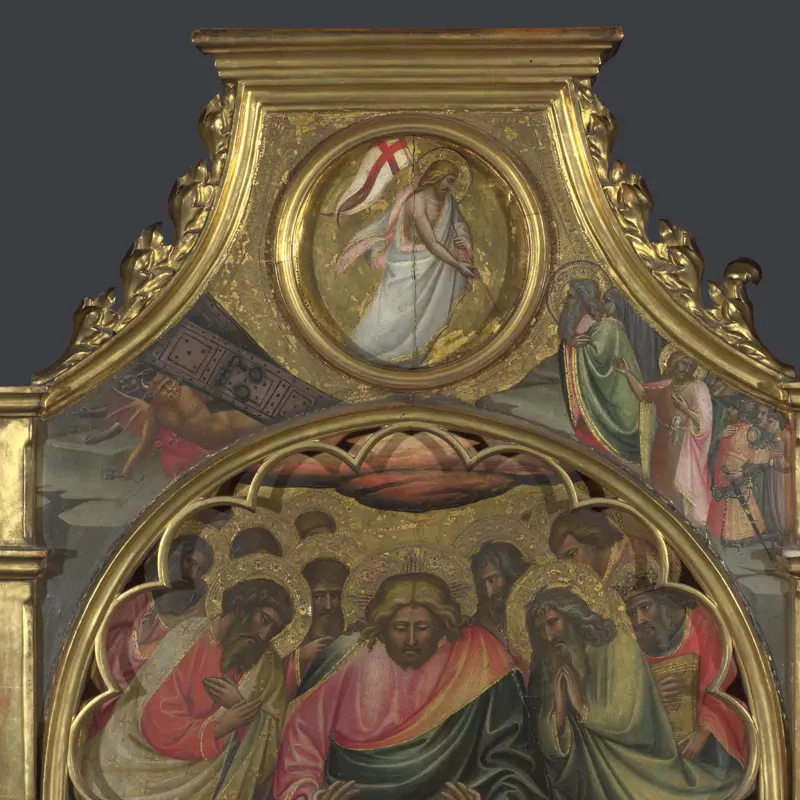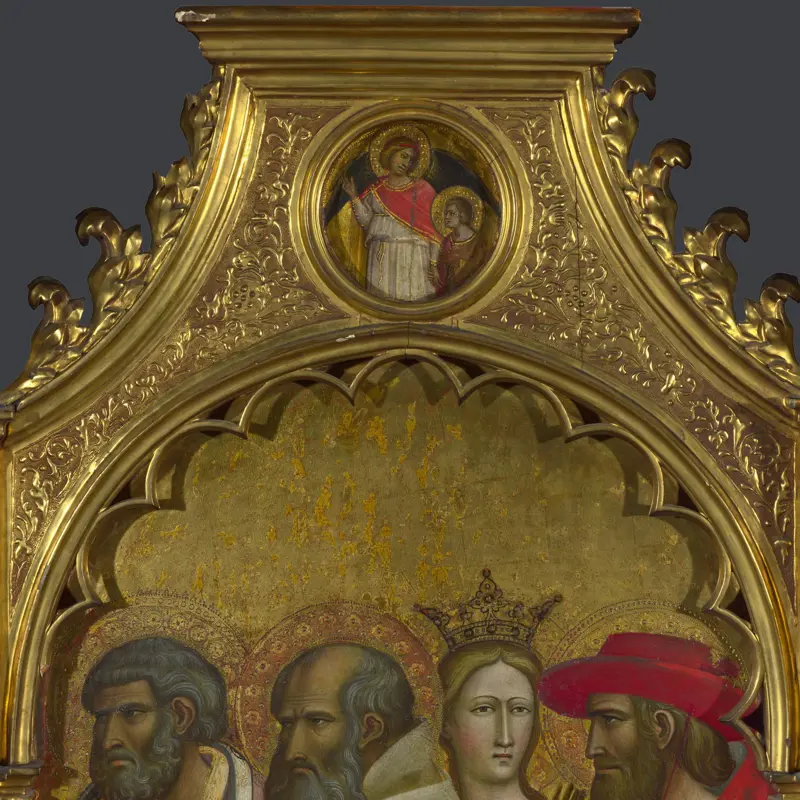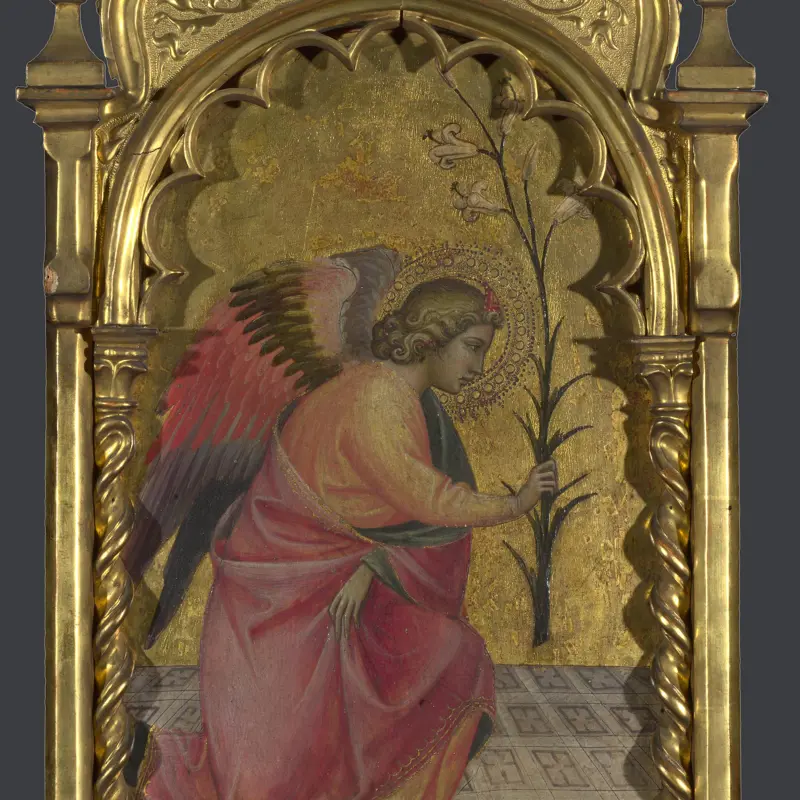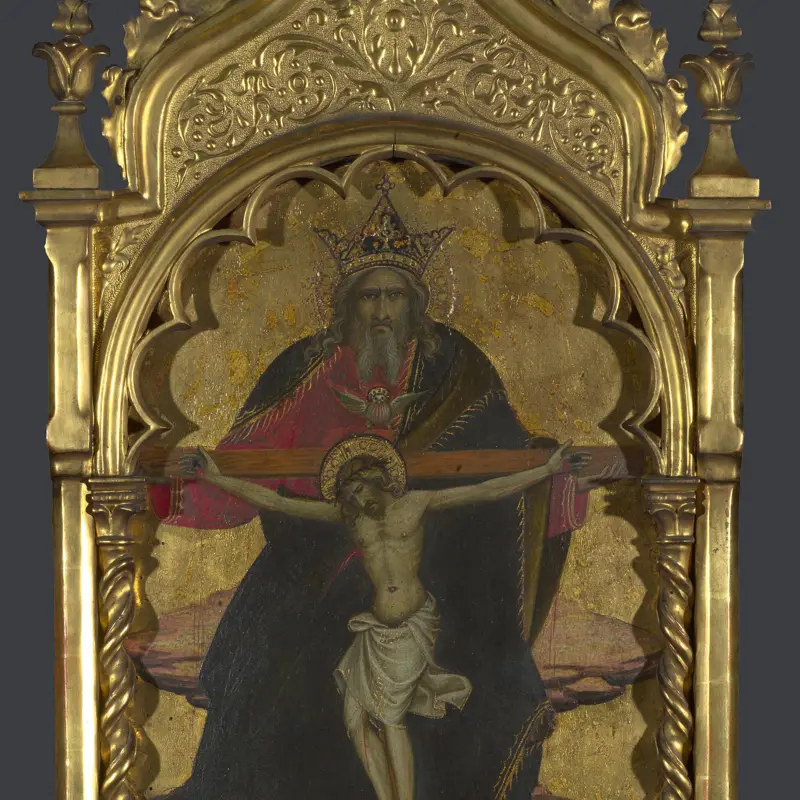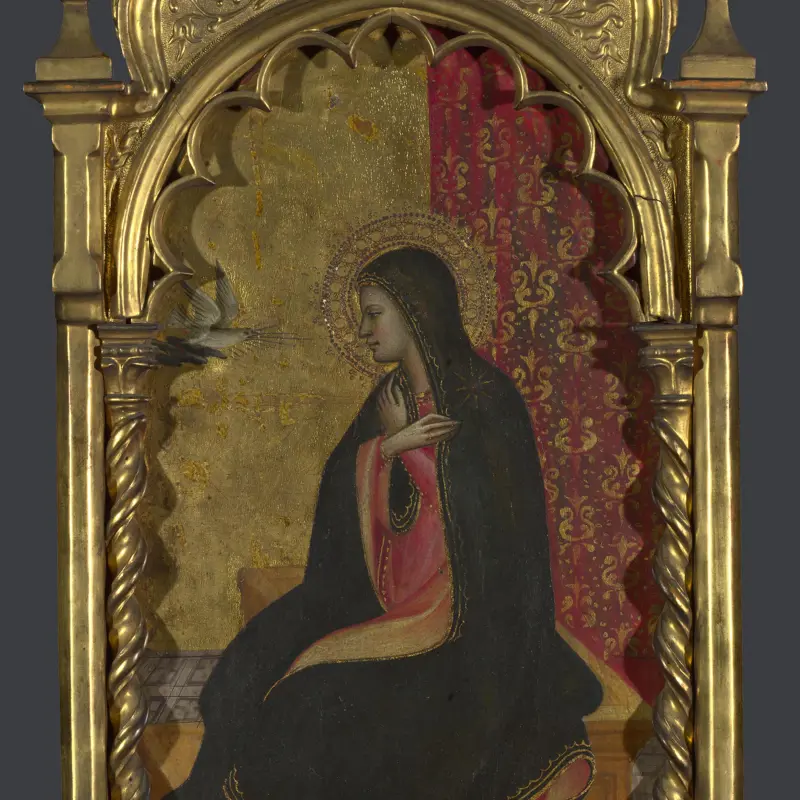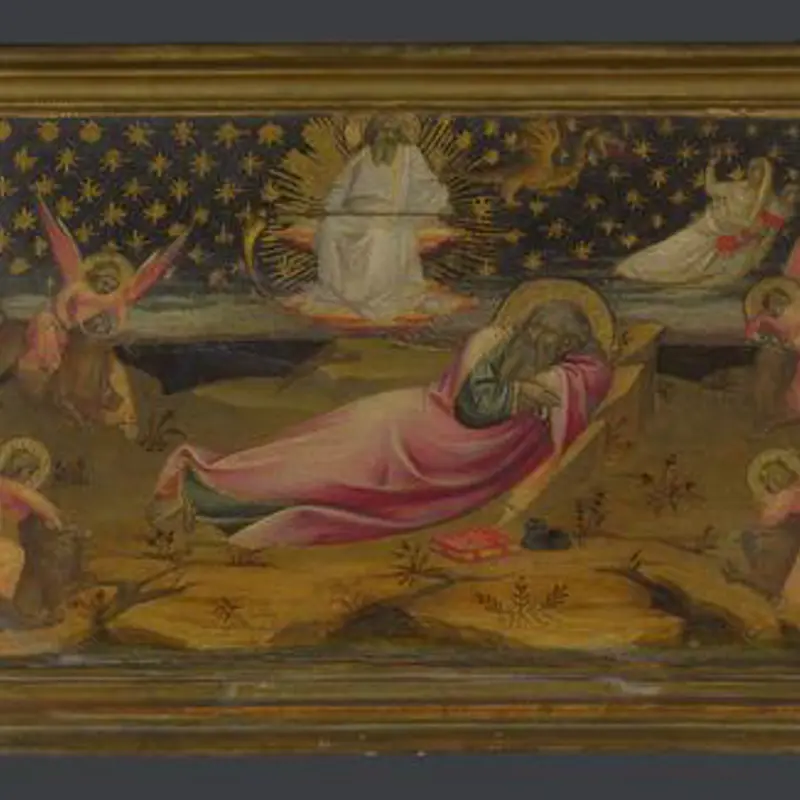Giovanni dal Ponte, 'Saints Bernard, Scholastica, Benedict and John', about 1420-4?
About the work
Overview
These four saints come from a large polyptych (multi-panelled altarpiece) made for the high altar of the church of San Giovanni Evangelista, in Pratovecchio, Tuscany.
From left to right we see Saint Bernard, his book inscribed ‘S.BER’; a nun, probably Saint Scholastica, with her name scratched above her head; Saint Benedict, holding his symbol of a bunch of rods, and a book inscribed ‘B’; and Saint John the Baptist, wearing a purple mantle over a hair shirt.
San Giovanni was a Camaldolese nunnery, and the saints chosen were ones important for the nuns there. Benedict wrote the Benedictine Rule, which the nuns followed, while Scholastica, Benedict’s sister, was the first abbess of the Benedictine Order. Bernard founded the Cistercian Order, which followed a stricter version of monastic life, and John was a hermit – Camaldolites lived partly as hermits.
Key facts
Details
- Full title
- Saints Bernard, Scholastica, Benedict and John the Baptist: Main Tier Left Panel
- Artist
- Giovanni dal Ponte
- Artist dates
- About 1385 - 1437
- Part of the group
- Ascension of John the Evangelist Altarpiece
- Date made
- About 1420-4?
- Medium and support
- Egg tempera on wood (probably poplar)
- Dimensions
- 147 × 66 cm
- Inscription summary
- Inscribed
- Acquisition credit
- Bought, 1857
- Inventory number
- NG580.2
- Location
- Not on display
- Collection
- Main Collection
Provenance
Additional information
Text extracted from the ‘Provenance’ section of the catalogue entry in Dillian Gordon, ‘National Gallery Catalogues: The Fifteenth Century Italian Paintings’, vol. 1, London 2003; for further information, see the full catalogue entry.
Exhibition history
-
2011Devotion by Design: Italian Altarpieces before 1500The National Gallery (London)6 July 2011 - 2 October 2011
Bibliography
-
1951Davies, Martin, National Gallery Catalogues: The Earlier Italian Schools, London 1951
-
1986Davies, Martin, National Gallery Catalogues: The Earlier Italian Schools, revised edn, London 1986
-
2001
C. Baker and T. Henry, The National Gallery: Complete Illustrated Catalogue, London 2001
-
2003Gordon, Dillian, National Gallery Catalogues: The Fifteenth Century Italian Paintings, 1, London 2003
About this record
If you know more about this work or have spotted an error, please contact us. Please note that exhibition histories are listed from 2009 onwards. Bibliographies may not be complete; more comprehensive information is available in the National Gallery Library.
Images
About the group: Ascension of John the Evangelist Altarpiece
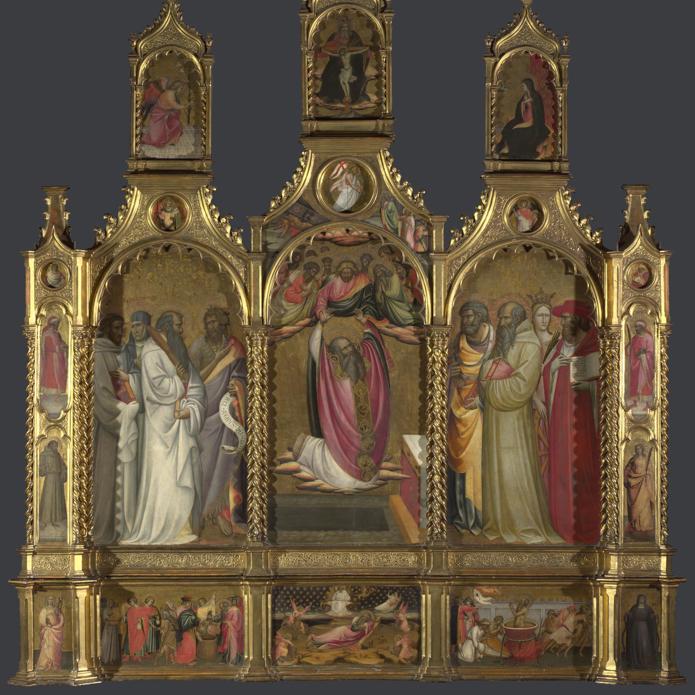
Overview
This large, gilded polyptych (multi-panelled altarpiece) is one of the few almost complete early Renaissance altarpieces in the National Gallery’s collection. It was made for the church of San Giovanni Evangelista, in Pratovecchio, Tuscany, probably in the 1420s.
Altarpieces on the high altar had to show the saint to whom the church was dedicated. Here, in the centre panel, we see Saint John the Evangelist being raised to heaven by Christ. A crowd of saints seems to watch from the large panels on either side.
The nuns at Pratovecchio were Camaldolites – a small, strict religious order found mainly in Italy – and the saints on the altarpiece would have been those who were important to them. This is one of the few surviving paintings of this date which might well have been commissioned by women – two abbesses – for the use of women.

